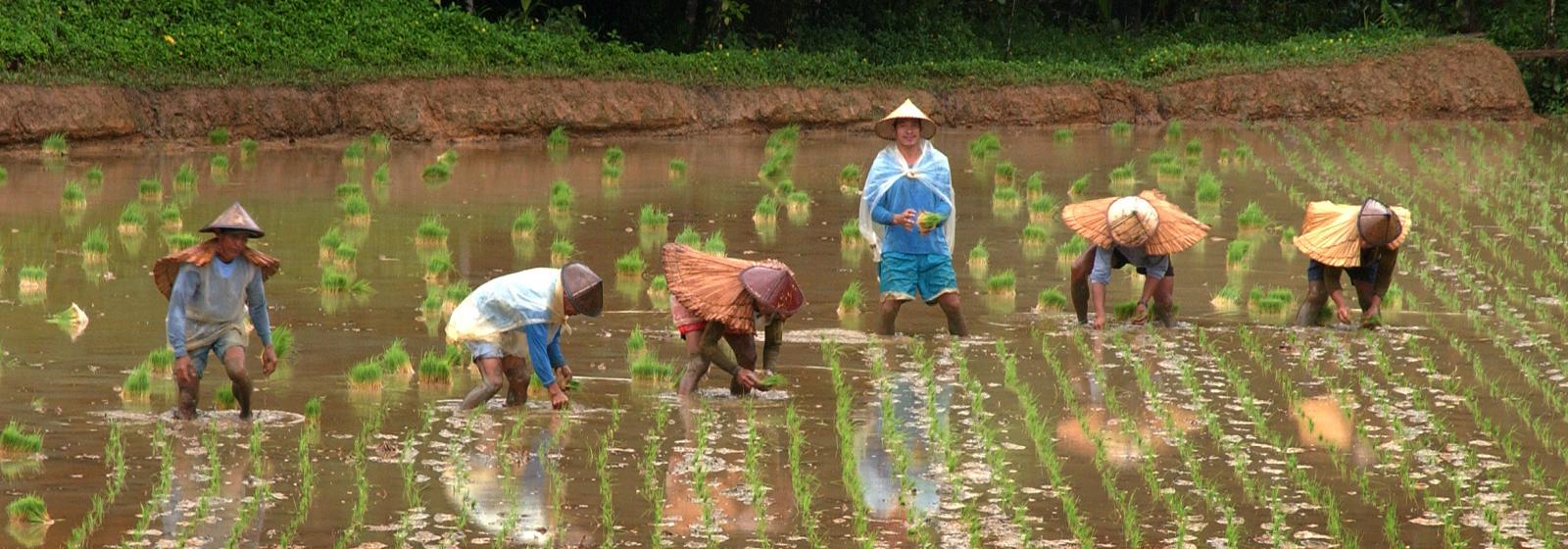FAO: rice prices hit highest point in 15 years due to shortages in Asia
In August, the UN Food and Agriculture Agency reported a 9.8 per cent price hike over July despite an overall drop in food prices. Rice is vulnerable to extreme climate events, like those that devastated Pakistan and China last year, but the recent increase was also driven by India's export ban. Southeast Asian countries, which are the hardest hit, are looking for other solutions.
Milan (AsiaNews) – In August, rice prices reached their highest point in 15 years, like in 2008, when a global economic and financial crisis was underway, the United Nations Food and Agriculture Agency (FAO) reported last week.
The FAO All Rice Price Index rose by 9.8 per cent in August over the previous month, even though overall food prices declined over 2022.
Some projections expect this year to end with the largest global rice shortage in 20 years, due to extreme climate events (to which rice is particularly vulnerable) that hit Pakistan and China last year, cutting production.
Globally, FAO's price index shows a 24 per cent drop over its peak in March last year, due to the COVID-19 pandemic, the war in Ukraine, and climate change.
Some of Asia’s staples, like rice, but also sugar, have not seen prices drop. This has been particularly hard for countries in Southeast Asia. About 30 per cent of the world's rice output comes from this region, while rice provides 50 per cent of the population's caloric intake.
This sudden increase in prices followed India's export ban last July on non-basmati rice, which accounts for about a quarter of its rice exports.
“Uncertainty about the ban’s duration and concerns over export restrictions caused supply-chain actors to hold-on to stocks, renegotiate contracts or stop making price offers, thereby limiting most trade to small volumes and previously concluded sales," the organisation said.
About 40 per cent of the rice exported worldwide comes from India, while its main buyers are Bangladesh, Saudi Arabia, Iran, Iraq, and Benin.
According to FAO, even if India lifts the ban, price reductions in Asia are likely to be modest in 2024 due to possible disruptions in trade caused by climate change.
Poor rain fall in Thailand also played a role in pushing up rice prices in August; in fact, the second-largest rice exporter in the world (whose exports jumped by almost 12 per cent this year) is also an important sugar exporter.
Rainfall in its central regions was 40 per cent lower than normal, while the cultivation area is progressively decreasing year by year, to the point that agricultural yield could be cut by up to 6 per cent or 25 million tonnes.
As a result, Thai rice reached the price of US$ 648 per tonne, the highest ever recorded since October 2008, an increase of almost 50 per cent over the past year, Bloomberg reported.
Other studies looked at the role of flooding in China and Pakistan in the second half of last year.
The floods hit major producing regions in China and devastated hundreds of hectares in Pakistan, whose year-on-year production fell by 31 per cent, worse than initially expected.
In Asia, price volatility has led countries to find different solutions. In Thailand the authorities have encouraged farmers to focus on a single crop, planting less rice, and turn to crops that need less water.
Malaysia too has faced shortages of rice (usually imported), driving up prices to 33 ringgit (US$ 7.05) per 10 kilograms.
According to growers, shortages stem from lack of clean water for irrigation and the poor quality of seeds, which generate a poor yield.
Against a backdrop of rising inflation, the Philippines, Southeast Asia's largest rice importer along with Malaysia and Indonesia, imposed a price cap on rice, followed by a five-year deal with Vietnam, the world's third-largest rice exporter after India and Thailand.
Earlier this month, Philippine President Ferdinand Marcos Jr, who spoke of an "alarming increase in the retail price" of the product, reaching 60 pesos per kilogram (US$ 1.05), imposed a ceiling of 45 pesos for well-milled rice and 41 for regular milled rice.
During the election campaign, the son of a former dictator by the same name, had promised to bring the price down to 20 pesos per kilo. Yesterday more than 300 small rice retailers in Metro Manila and Zamboanga del Sur began receiving state subsidies of 15,000 pesos to cover economic losses.
After meeting Vietnamese Prime Minister Phạm Minh Chính on the sidelines of last week’s ASEAN summit in Indonesia, Marcos announced that he had accepted Hanoi's offer for a five-year rice deal to ensure the country's food security.
With Vietnamese rice imports, the Philippines can meet 90 per cent of its food needs, but the rice fields in the Mekong Delta (Vietnam’s rice bowl) are also gradually drying up.







.png)










